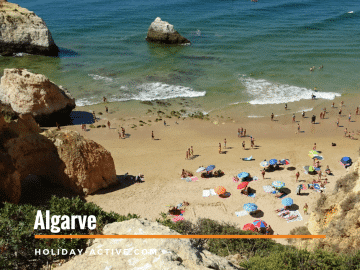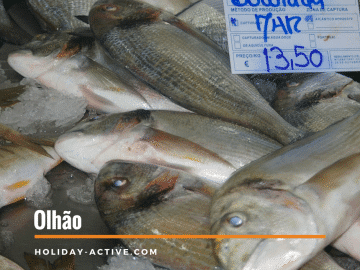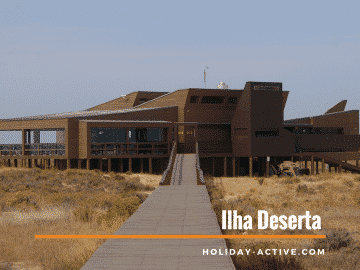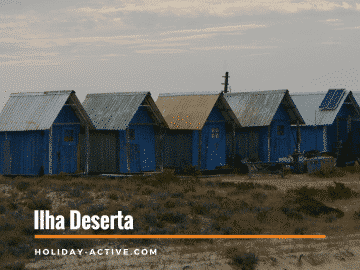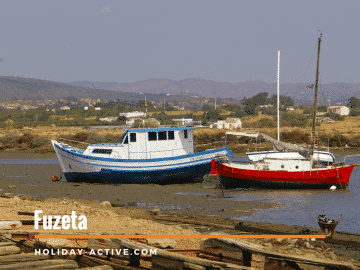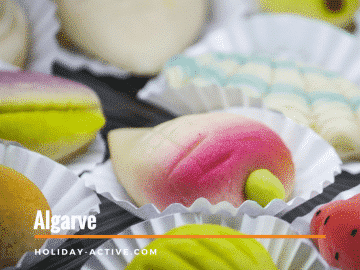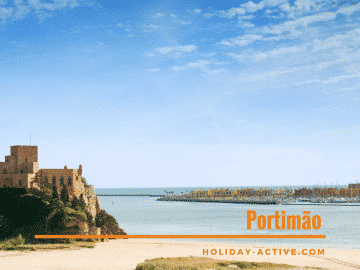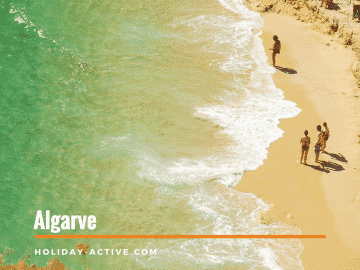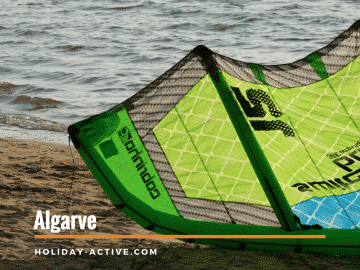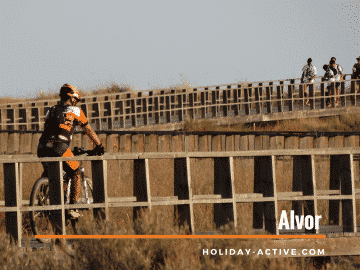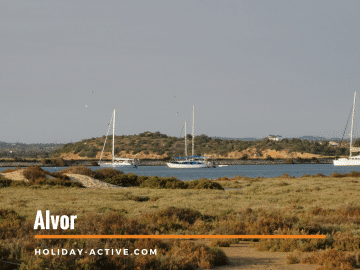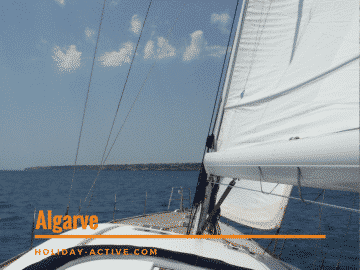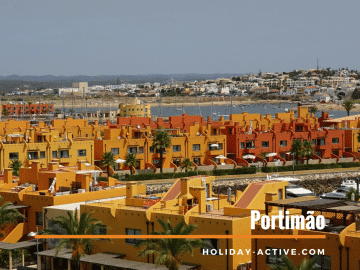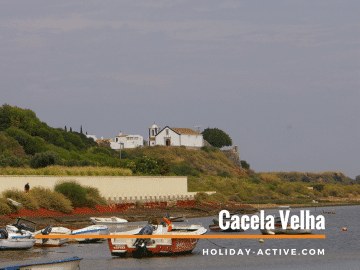Algarve
The Algarve was occupied by moors from the 8th to the 13th century. They named it Al-Gharb, meaning “the West”, as it was the most westerly point of their domain. Moorish influences can still be seen, in the almond, quinces and fig trees which cover most of these rugged lands and in the architecture, the latticework chimneys, whitewashed houses and hand painted tiles.
Golf has brought the Algarve many international prizes and awards, and the region has more than once been voted the best golfing destination in the world.
The sea is in every shade of blue, almost always calm and warm, and the beaches of fine white sand that stretch as far as the eye can see, with golden cliffs, small bays, and impressive rock formations
Where to stay and what to visit in the Algarve?
Where to stay in the Algarve? It all depends on you and your expectations
When mentioning holidays in the Algarve, the experience can be so distinct as the fingers in your hand. Each town has its own personality and uniqueness, better suited to some than others.
Vilamoura focuses on outstanding tourist facilities and services not wanting to attract large groups excursions or those simply looking for a cheap drinking holiday, for this sort of holiday head to Albufeira.
For a more traditional Portuguese holiday atmosphere consider the historic city of Lagos or the charming town of Tavira. Sagres and Aljezur are perfect for surfers and outdoor adventure, Faro and Ria Formosa are intricate networks of islands and inlets, beautiful uncrowded beaches and part of the natural reserve
Let us lead you on a journey through the Algarve
Aljezur (107 km west from Faro)
Aljezur
Aljezur is an agricultural village surrounded by fertile land and the Aljezur river. It is situated in the Parque Natural do Sudoeste Alentejano e Costa Vicentina, a large natural park that extends along the western coast of the Algarve.
It is a small and peaceful town of whitewashed houses and cobblestone streets, dominated by its Moorish Castle of the 10th century. It was that was built to guard the river port that once provided direct access to the sea. It was one of the last Moorish strongholds, in the Algarve, to be won over by Christians in 1246. Divided into 2 parts Vila Velha (Old Town) and Igreja Nova, to where the population reallocated to avoid malaria infested mosquitos. Here you will find the 18th century church, in honour of the patron saint of Aljezur, Our Lady of Dawn. It was built by order of the Bishop of the Algarve to replace the original main parish church that was destroyed in the 1755 earthquake.
A paradise for outdoor people, combining land and sea. Available nature trails, mountain biking tours and a donkey or horse rides, birdwatching, fishing and diving but especially surfing, due to its great waves and long stretch of unspoilt, uncrowded and beautiful beaches of sand dunes, towering cliffs and with hardly a building in sight.
Beaches nearby Aljezur
The Costa Vicentina, as this south-western coastal strip is referred to, contains some of the most beautiful unspoilt beaches in Portugal.
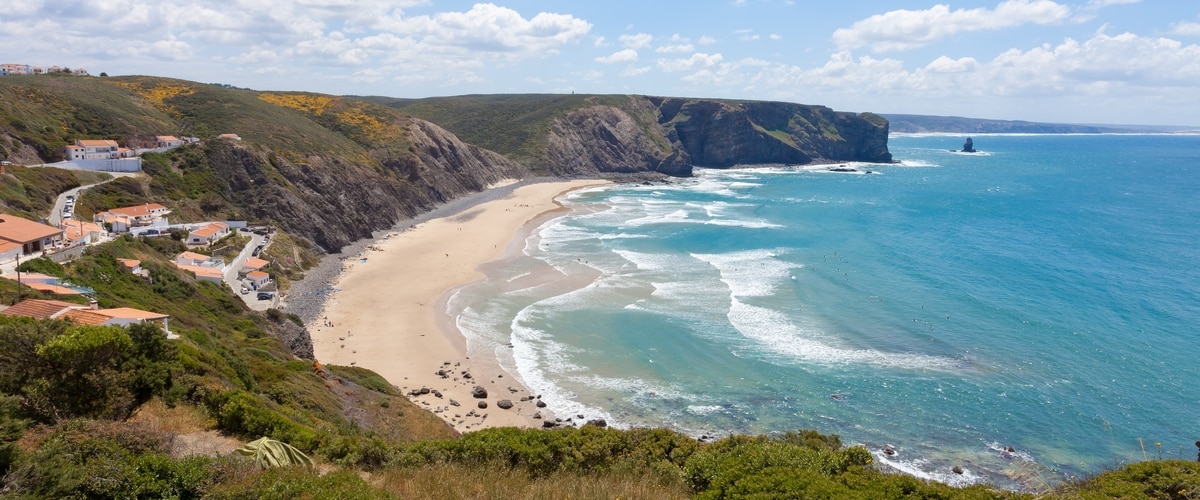
Praia do Amado – A beautiful beach that attracts surfers and bodyboarders
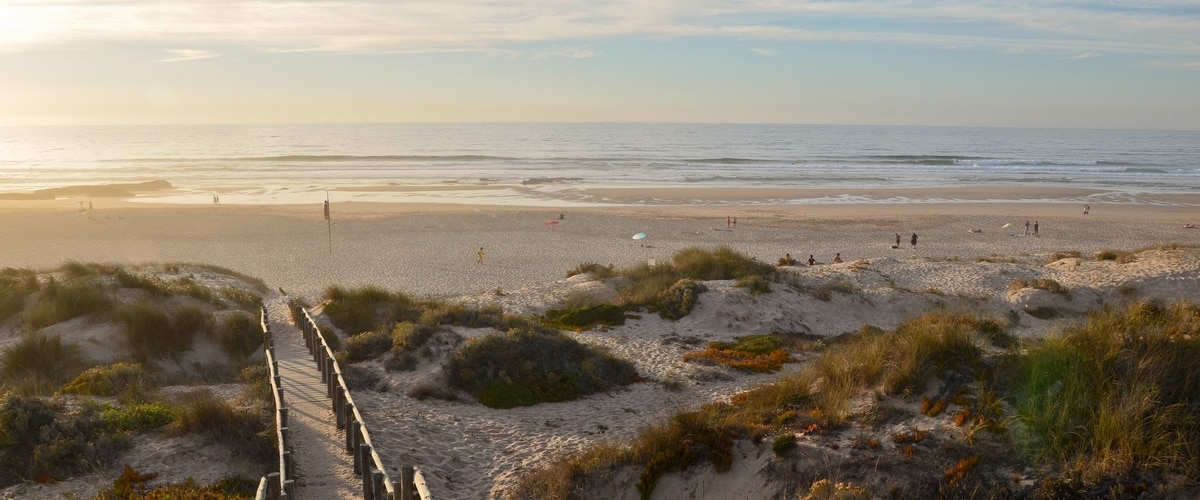
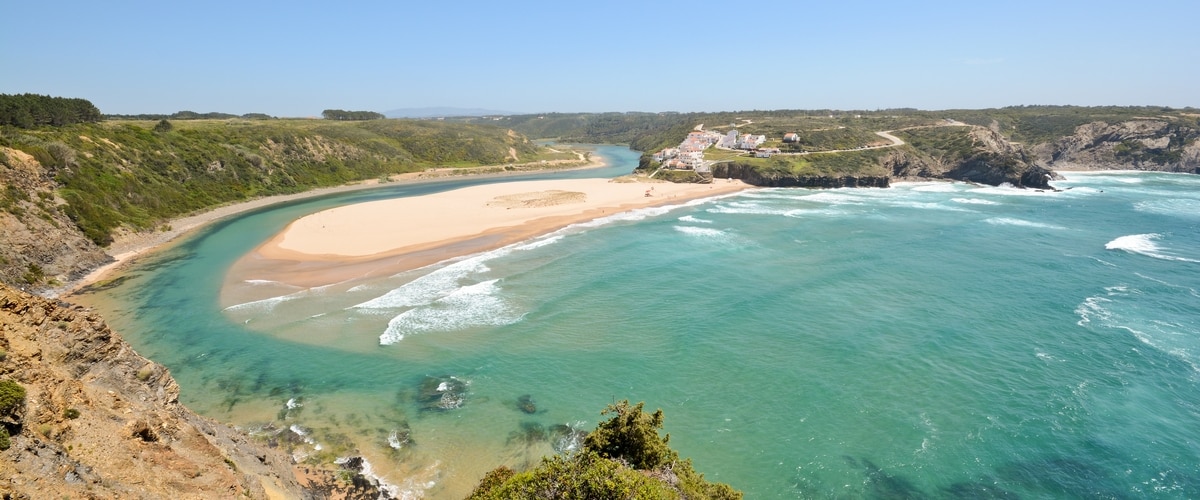
The cove of Praia das Adregas, just south of Odeceixe, is an official naturist beach.
Bordoeira On the mouth of the Ribeira da Bordeira, features limestone cliffs and extensive sand dunes that spread inland to Carrapateira village. Good waves makes it popular with surfers.
Praia da Amoreira is a natural and as yet unspoilt 7kms of sandy beach. It’s popular with surfers, fishermen and those who simply love a uncrowded day at the beach
Sagres (116 km west from Faro)
Sagres
Sagres offers visitors beautiful beaches and some of the best surfing spots in Portugal, suitable for beginners to advanced surfers. It has a laid-back attitude associated with the surfing lifestyle. Great spot for those who enjoy the outdoors offering great hiking paths, striking natural scenery comprising of raging seas, towering cliffs and white sandy beaches.
Henry, the Navigator, created the hub of the Portuguese nautical study in Sagres. From here plans were devised for the Caravels to set out to the coast of Africa, launching what is known as the Portuguese Age of Discoveries (15th and 16th century).
Visit the Sagres Fort, built on the site of Henry the Navigator’s famous school of navigation. Inside, on the ground, you will find an enigmatic nautical compass.
Venture to Cabo São Vicente, Europe’s most south-westerly point and its lighthouse. It derives its name from the martyr St Vincente whose relics were allegedly carried here all the way from the Holy Land, by ravens. When the relics were transferred to Lisbon in 1173, the ravens, poised at the boat’s bow, guarded them all to Lisbon, where they still remain. This is the reason why the symbol of Lisbon is 2 ravens on a caravel
Beaches nearby Sagres
Praia da Mareta A long sandy beach that gets considerably slender with the high tide. Great for snorkeling
Praia da Baleeira is a small beach situated on the eastern side of the harbour, mostly sandy, However, there can be occasional problems with the water quality due to its proximity to the harbour
Praia do Tonel, the surfers choice
Praia do Martinhal, a big expanse of sandy beach, good for children to enjoy the gentle waves lapping the sand
Lagos (90 km west from Faro)
Lagos
In Lagos, everything seems to draw you to the beach and the simple pleasures of life. It is a land with a strong relationship with the sea where colourful fishing boats bring their days catch to market and sailboats head into Lagos Marina
One of the most popular tourist destinations on the Algarve, Lagos is a bustling town full of activity, nightlife and modern attractions. It has a delightful historical centre, which is surrounded by an ancient Moorish wall. The town is more relaxed than other resorts, such as Albufeira or Praia da Rocha, which makes it very safe and quieter at night.
Visit the Gil Eanes square, dedicated to this navigator that proved the world did not end at Cape Bojador. Admire the controversial statue of king D Sebastião, who left from here to the battle of Ksar el-Kebir, from which he never returned; though people always expected him to, on one foggy morning. This caused Portugal to lose its independence to Spain, which was only restored in 1640.
Lagos main monuments are the Governor’s’ Castle, the Ponta da Bandeira Fort, which protected the town from invaders, particularly buccaneers, and which offers beautiful views over the houses and the sea. There you will find a small chapel dedicated to St Barbara, often evoked as a protector of storms
Visit the Church of Santo António, where D. Sebastião reputedly attended his last mass before his tragic expedition
It was also in Lagos, under the arcades of Praça Infante D. Henrique, that the first slave market in Europe was held, in a space now transformed into a cultural centre for exhibitions
Beaches nearby Lagos
Praia do Camilo – Rich blue crystalline water makes the long stair descent to this beach worth your while. Great spot for snorkelling and the rock formations will captive you. It is a relatively small beach and in summer can get a bit overcrowded. Better to time your visit with the low tide
Praia de Dona Ana – It is the picture postcard of the Algarve beaches. A small beach, with clear waters, to which the rocks carved out by erosion have lent a stunning beauty. It is one of the most sheltered beaches but can get a bit crowded
Ponta da Piedade – The highlight of the Lagos region. A series of rock formations with impressive jagged shapes and excavated caves that are best enjoyed on a boat trip.
Meia Praia – A sandy beach about five kilometres long, starting at Marina de Lagos.
Canavial, Porto de Mós and Praia da Luz complete the range of beaches, which also include many sandy coves that are hard to get to, some only accessible by sea. They are small havens waiting to be discovered.
Portimão and around (70 km west from Faro)
Portimão
Located in the estuary of the River Arade, Portimão has a long fishing tradition applied to the canning industry. An example of this is the Portimão Museum a superb refurbishment of an old cannery
Stroll along to the Marina, one of the liveliest parts of the city both by day and by night. Climb up the stairs to the Fortress of Santa Catarina de Ribamar, built to defend the harbour and the population from attacks of pirates, providing crossfire with the São João do Arade Fort, right in front, in Ferragudo
Ferragudo
Ferragudo is smaller and more traditional than it’s neighbour, Portimão. It’s a nice village made up of traditional fisherman’s whitewashed homes tumbling down the hillside towards the riverfront, with people sitting outside the cafes around the village square, passing the time of day
Beaches nearby Portimão
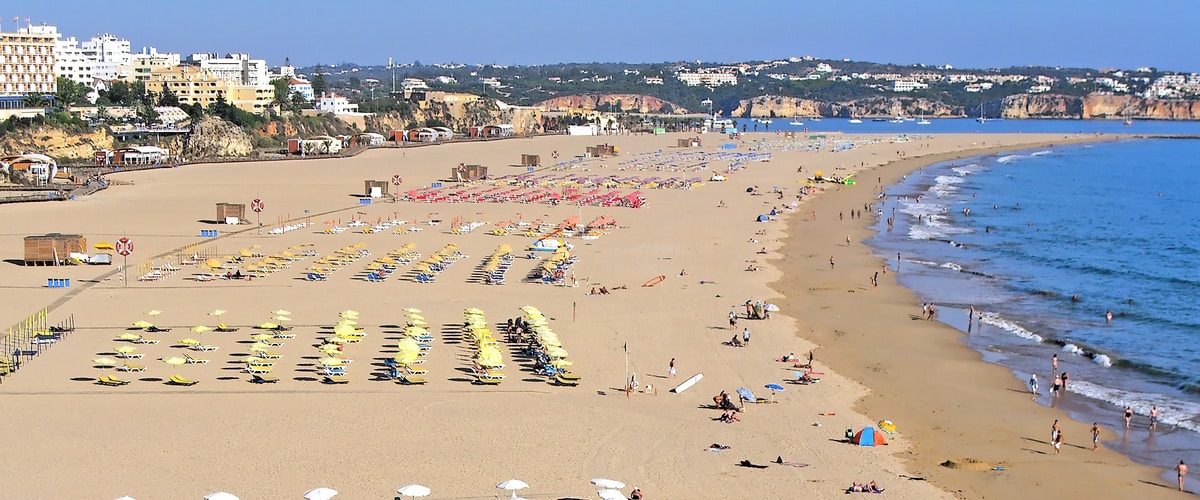
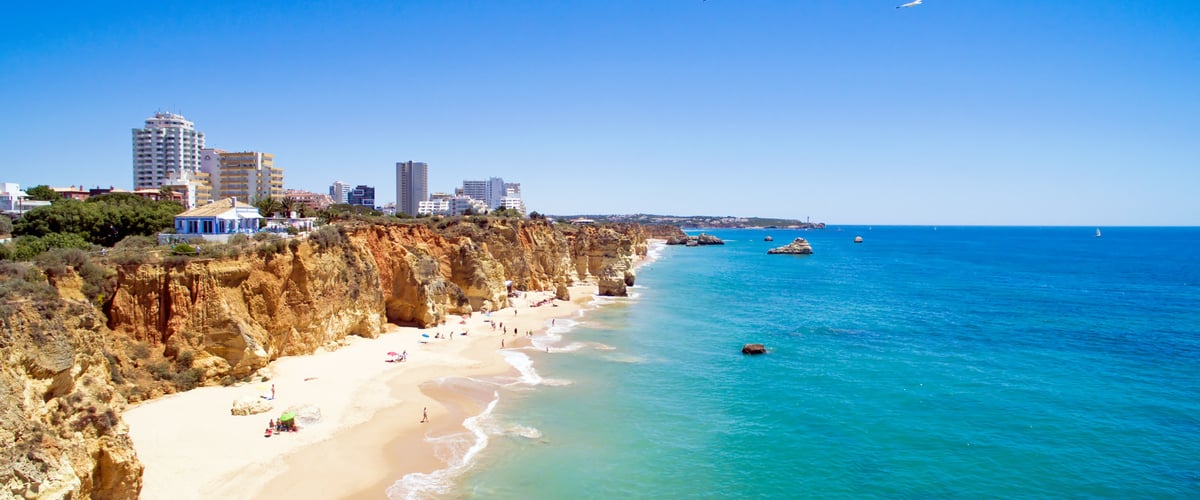
Some smaller, others larger, but always framed by jagged rocks that embellish the landscape, here you’ll find Careanos, Vau, Barranco das Canas, João d’Arens, Prainha and Três Irmãos beaches.
This sequence ends at the long sandy beach of Praia do Alvor and its estuary, an area of lagoons important for aquatic bird watching.
Carvoeiro and around (65 km west from Faro)
Carvoeiro
Carvoeiro is a picturesque Portuguese resort town, a traditional village very well maintained over the years, and that makes for a fantastic holiday destination for tourists who are wishing a calm and relaxed holiday.
Carvoeiro has much to offer, hiking trails, water sports, great beaches, a traditional Portuguese ambience and an extensive selection of restaurants and bars.
Benagil Sea Cave
Benagil is a spectacular domed cave that has three arch openings and a vaulted holed roof. The walls of this unique cave are lined with beautiful sandstone strata and at the right time of day, the sun casts light through this dome, illuminating a stunning scene.
Boat tours to this cave are available from Carvoeiro, but you may prefer to rent a kayak and have a swim at the small beach nearby
Algar Seco Cliffs
Algar Seco is another stunning cliff area, a few hundred meters along the coast, east, of the main square and beach It is a popular nature site where ocean wave erosion has carved out grottoes, islets and water-spouts.
Albufeira (40 km west from Faro)
Albufeira
Founded by the Arabs, Albufeira is a town of whitewashed houses and narrow winding streets. It is one of the busiest seaside resorts in the Algarve for its lively and carefree atmosphere. Albufeira owes its fame to the beautiful beaches and the many bars and nightclubs. A town to be explored either by day or night as the excitement never stops. It is specially catered for group holidays.
Places of interest in Albufeira are the Xorino cave, where the moors took refuge in the 13th century following the Christian reconquest of the town; the Chapel of Our Lady of Orada, whose feast takes place on 14 August and includes a grand procession of boats, and the modern colourful Albufeira Marina, whose excellent facilities welcome all those who arrive by sea.
Beaches nearby Albufeira
Each beach is different, and each its own charm. Starting west at Salgados Beach with its white sand dunes. A succession of beaches follows, framed by the cliffs carved out by erosion, such as Galé, Castelo, São Rafael and Arrifes.
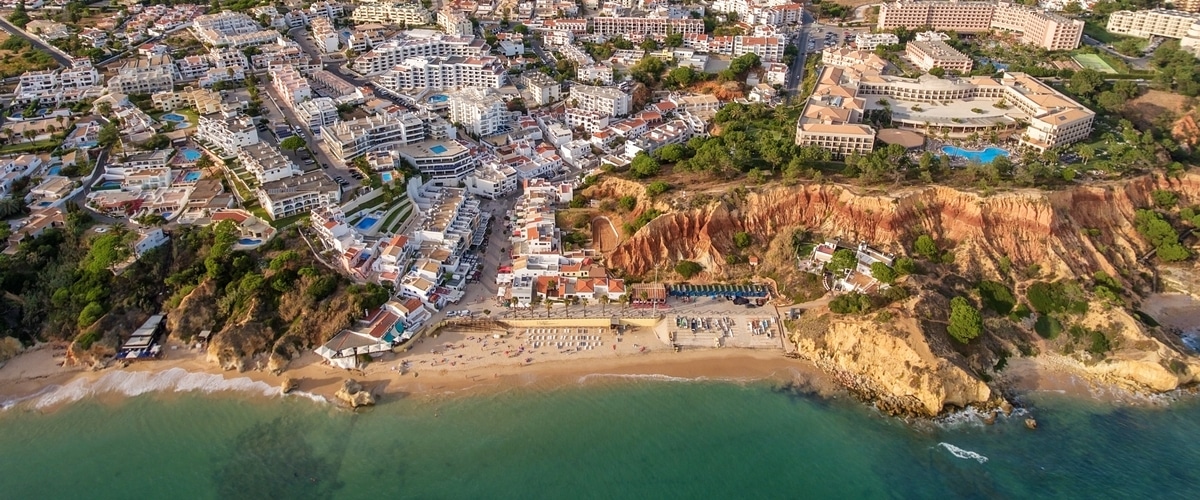
Falésia Beach, an immense stretch of beach edged by the cliffs that give it its name, they stand out due to their hues of golden, coppery and red, accentuated in the late afternoon light.
Vilamoura (30 km west from Faro)
Vilamoura
Modern, lively and sophisticated, Vilamoura has developed around its marina and is today one of the largest leisure resorts in Europe. Trendy and upmarket, it is the main hub of entertainment, not only for those who arrive by boat but for everyone spending a holiday in the area. A promenade at Vilamoura Marina at the end of the day is a tradition. Stop for ice cream, cool drink or dinner. As for nightlife, Vilamoura won’t leave you disappointed with its wide range of bars, clubs and casino
Excellent quality hotels and tourist villages offer a complete package for those looking to spend some relaxing days by the sea. There are countless activities to do during the day. Tennis, horse riding, golfing, sailing, windsurfing, jet skiing, parasailing, boat trips, fishing, the range is so huge you’ll be spoilt for choice.
Beaches nearby Vilamoura
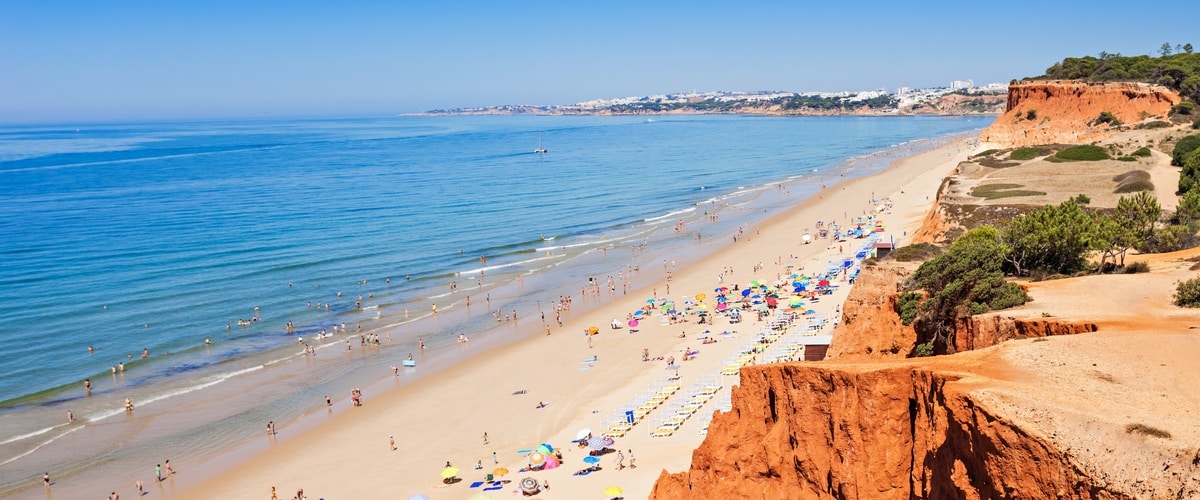
Faro and around
Faro
Faro is the gateway for those arriving by plane and the capital of the Algarve since 1756.
During Roman times Faro established itself as a major fishing port and centre of the salt industry. Faro was the last place on the Iberian Peninsula to be liberated from Islamic rule, in 1249 A peaceful and charming town that has retained its ambience throughout the time.
It is situated on the edge of the Ria Formosa National Park, a series of saltwater lagoons and vast area of marshland, channels and islets that are a haven for migratory birds and wildlife. Beyond the Ria Formosa National Park, there are the three paradisiacal sandbar islands: Ilha da Culatra, Ilha da Deserta, and Ilha de Faro
The Manuel Bivar Gardens overlook the marina, the Ria Formosa and the sea. Restaurants are plentiful so be sure to try the typical Cataplana, a seafood dish of Arabic origin
The Arco da Vila gives access to the old town, known as “vila a dentro” (into the town). The arch has a bell tower with a niche, which hosts a statue of Thomas Aquinas, the patron saint of the city. Further up will find the 11th century Arab Gateway, the oldest horseshoe arch in the country, which allows for the entrance to the city. From here, a tangle of cobbled streets begins, with history at every turn, and fantastic old buildings, windy streets to explore and cafés to rest in.
In Largo da Sé, dominated by the buildings of the Bishops’ Palace, you will find the Cathedral, with its beautiful gilt carvings and tiles. Erected in 1251 after the Christian reconquest on the site formerly occupied by a mosque, it has been heavily rebuilt over the centuries, particularly after the 1755 earthquake, and a devastating fire in 1596 following the invasion and looting by English troops.
Nearby lie the two watchtowers that protected the Arco do Repouso, (resting Arch) so named because, according to the story, it was here that King Afonso III rested during the conquest of Faro.
Outside the perimeter of the walls, there is a different city, of affluent homes and palaces, rebuilt after the 1755 earthquake by the nobility and bourgeoisie.
Also notable is the Church of São Pedro, decorated in the baroque and rococo styles, the Church of Nossa Senhora do Carmo and the Chapel of Bones. The latter has an inscription over the door “Stop here and think of the fate that will befall you – 1816”, and approximately 1245 bones incorporated into the designs of the chapel, with skulls lining the wall, work of the Carmelite monks.
Rua de Santo António is pedestrianised and paved with cobblestones, and is the busiest area, with many shops and restaurants. It was here that an influential Jewish community was established in the 19th century, whose presence is attested by the Synagogue and Museum in the Jewish Historical
Estoi
Complete your tour of Faro’s historic sites with a trip to Estoi, eleven kilometres from Faro’s city centre where you will encounter more reminders of the area’s importance during the times of the Roman Empire. The ruins of Milreu, of which the stone mosaics can still be seen, Roman baths, a wine press, mausoleum and the remains of a temple.
The Pink Palace of Estoi is a rococo building, built in the 19th century by the Viscount of Estoi, renowned for its gardens and handpainted tiles. With French style gardens, including statues and exotic flora, two tea pavilions, a number of dining rooms and even its own chapel. The palace is now a luxury hotel in Estoi, the Pousada de Palácio de Estoi, which is open for public viewing.
Olhão
Olhão is Algarve’s biggest fishing port. Stroll along the waterfront promenade and stop at the market to feast your eyes on the morning fish and vegetable stalls. Enjoy the fresh fish on charcoal, from the sea directly to your plate. It also boasts of some superb tile-fronted buildings, shops and bars. This village has an Arab feel about it with its flat roofs and narrow streets.
Ria Formosa
The Ria Formosa Natural Park consists of 18 000 ha, protected from the sea by a succession of barrier-island: Ilha Faro, Ilha Deserta, Ilha da Culatra (where the lighthouse of Santa Maria is located), Ilha da Armona, Ilha de Tavira, Cabanas e Península da Cacela. This impressive area extends along the leeward coast of the Algarve through the municipalities of Loulé, Faro, Olhão, Tavira and Vila Real de Santo António.
A paradise for birdwatchers, hosting on a regular basis more than 20,000 birds during the wintering period and boasts some rare species such as the Purple Swamphen, the chameleon – a reptile that only exists in the south of Portugal and the seahorse, retaining one of the largest populations of seahorses in the world.
The Ria Formosa is also known for the Portuguese Water Dog, a breed native from the Algarve and made famous for being Presidents Obama pet of choice
Due to its shallow waters, the lagoon is also a nursery for several oceanic species. Shellfish farming can be found in the tidal flats of the Ria Formosa. Extremely hard labour that is responsible for nearly 80% of the Portuguese clam exports.
Beaches nearby Faro
Faro and its surrounding coastline are protected by a series of islands, creating shallow waters that are protected from the Atlantic waves.
Praia de Faro is 5km of golden sand, safe and calm waters with plenty of amenities

Ilha da Culatra – the island is a long 6km stretch of sandy beach with transparent and calm blue sea. The south side faces the ocean the north side, a lagoon, perfect for anchoring. Small fishing villages dot this island, Culatra and Farol (lighthouse). There are no roads or vehicles, but wooden walkways. You can reach Ilha da Culatra by ferry, which departs from Olhão or Faro.
Ilha da Barreta , commonly known as Ilha Deserta (Deserted Island) is a pure crystal blue beach of unspoiled nature. Flamingos and terns inhabit the lagoons and dunes. The island is inhabited but for an impressive wooden restaurant shaped as a ship, that serves fresh fish and seafood. Uncrowded, pure and breathtaking.To get here catch the ferry in Faro, or use this service provided by the restaurant
Tavira and around (40 km east from Faro)
Tavira
Tavira is a charming town and the ideal place for those looking for a more relaxed holiday, away from the crowd and the touristic hype, that like to know the culture and the true ambiance of a place. Its an intricate design of narrow cobbled streets, white houses, churches (37 to be precise) and lattice timber doors, a heritage from the arabs.
The 17th century roman bridge, over the River Gilão, with its 7 arches connects both sides of Tavira edging you to discover its hidden corners, or just rest on of its walled parapet from which you can enjoy a beautiful view over the houses and see the people go by.
The evenings in Tavira are spent alfresco dining in the charming historic centre, trying the culinary specialties including octopus cooked in various ways or razor clam rice and tuna, since tuna fishing is one of the area’s more traditional activities
Other points of interest is the Castle Tower that offers the best view of town; the beautiful Renaissance Portal of Misericórdia, the Islamic Centre and the Municipal Museum, housed in the Palácio da Galeria, its most remarkable building. Santa Maria Church, the final resting place of D. Paio Peres Correia and the seven knights of the Order of Santiago who led the campaign to conquer Tavira from the Moors in 1242.
The town’s charms continue as far as the Ria Formosa, reached by following the road alongside the River Gilão, flanked by the white salt pans, where you can admire birds like the black-winged stilt, the flamingo and the pied avocet.
Pego do Inferno (Moinhos da Rocha)
Moinhos da Rocha, also known as Pego do Inferno,is an idyllic waterfall that forms a small lagoon, 8km from Tavira. Great for a quick swim or a picnic in the surrounding area
Beaches nearby Tavira
Ilha de Tavira – this 11km of golden sand that separates the sapphire blue ocean from the sheltered lagoon is a true delight. Uncrowded, it includes Terra Estreita beach, Barril beach, withs its anchor graveyard, and Homem Nu, a naturist beach.
Manta Rota is part of a long sweep of fine sand that arches from the frontier town of Vila Real de Santo António, o Praia de Cabanas in Tavira.
Vila Real de Sto António and around (90 km east from Faro)
Vila Real de Santo António
Vila Real de Santo António is situated on the Rio Guadiana, which is the river that divides the Algarve from Spain. At the end of the 19th century the town was a major canning centre for sardines and tuna, and the port was busy with the ships that sailed the Guadiana. It is a quaint, relaxed town, off the tourist beaten path. Though not for a frenetic nightlife it offers plenty to do and quite a lot to see. Stroll through the grid of streets leading to the main square, passing through low white buildings, scented orange trees, groceries stores, traditional shops and outdoor cafes
Cacela Velha
Perched on a low cliff facing the estuary offering great views from its clifftop, Cacela is highly picturesque and consists mainly of a church and a fort. In the “a Fabrica” just west of the village is a restaurant known for its seafood, oysters in particular.
Nature Reserve of Castro Marim and Vila Real de Santo António
Where the River Guadiana branches out into creeks and canals that flow into lakes, marshland and salt pans, creating the Marshland Nature Reserve of Castro Marim and Vila Real de Santo António, that provide a habitat to a wide variety of species, such as the white stork, flamingo and the black-winged stilt .
It is also privileged site for the reproduction of fishes, crustaceans and shellfish, who find shelter here in order to grow before they venture forth into the sea.
Salt continues to be produced in many of the salt pans, in accordance with artisanal processes, which is quite interesting to see, delivering a product whose quality is certified by the Nature Reserve.
There is an itinerary proposed by the interpretation center, to guide you through
Beaches nearby Vila Real de Sto António
Praia da Ponta da Areia – 10km of golden sand and warm waters that passes the resort towns of Monte Gordo, Altura and Manta Rota. A beautiful flat beach that is framed with the sand dunes of the Mata Nacional das Dunas Litorais Natural Park, Algarve’s largest forest.
Things to do in Algarve
Though tempting it may be to spend your days just lying on the beach, there are plenty of things to see and do in the Algarve.
Try surfing, and risk wanting to do it for the rest of your life.
Stand up paddle will get you in shape in no time and without you even realizing that you are doing a full-body workout.
Kayaking is great for family moments and Instagram photos.
But above all, immerse yourself in the local activities and get to know the places you are visiting.
We selected the TOP 20 “Things to do in Algarve” we believe to be the most relevant and with an insider’s knowledge.
Enjoy Portugal with holiday-active.com and make the most of your holidays in the Algarve.
Where to stay in the Algarve
What to visit in the Algarve?
Its all about Algarve’s traditions and origins. Why are the main agricultural products almonds, oranges and cork? What is it with the Algarve chimneys? Why do so many birdwatchers flock to the Algarve? Why is there fish and seafood on every restaurant menu?
Answers to this and much more on one of the many available tours in the Algarve
Where to stay in the Algarve
Handpicked Boat Tours in Algarve
Boat tours in the Algarve are practically on everybody’s list of “What to do in the Algarve”.
Catering for every need, you´ll find romantic sunset boat tours, family outings to see dolphins, party boats stopping for barbecues on the beach for party seekers, fishing boats that will take you to their secrets spots or just a boat all to yourself to relax and enjoy
Book your boat tour and enjoy the sea with holiday-active.com
Where to stay in the Algarve
Transfers and Skip the Line entrances to major sites
Where to stay in the Algarve
Your perfect accommodation in the Algarve
Where to stay in the Algarve? Our Suggestions
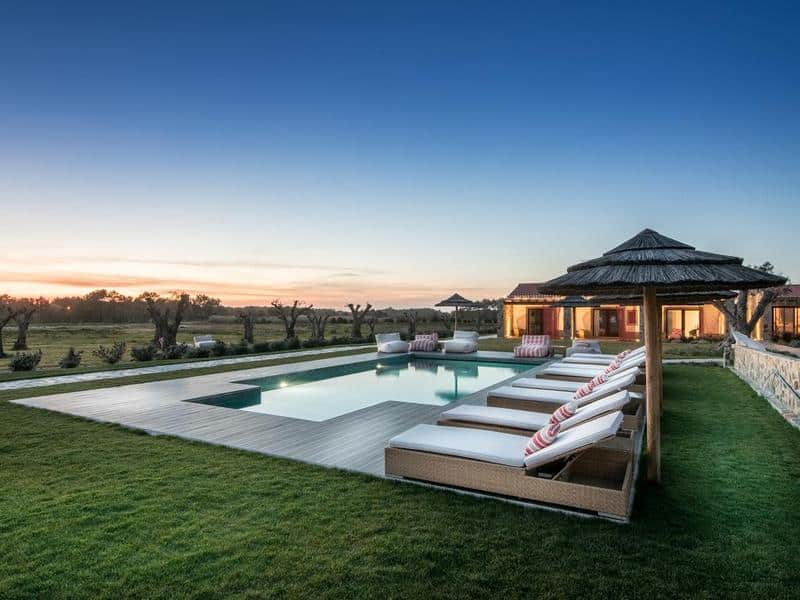
Monte do Cardal | Aljezur
With nine rooms with direct access to the pool, some with a fireplace and a small kitchen. A place full of charm and perfect to relish in nature

Aldeia da Pedralva – Vila do Bispo | Sagres
Built upon the ruins of an old traditional Portuguese village it offers self-catering villas decorated with simplicity and comfort.
The hotel’s restaurant offers local dishes and fresh seafood as well as light snacks.
Algarve beaches are just a few minutes with great waves for surfing. It is also a good glorious for biking and birdwatching
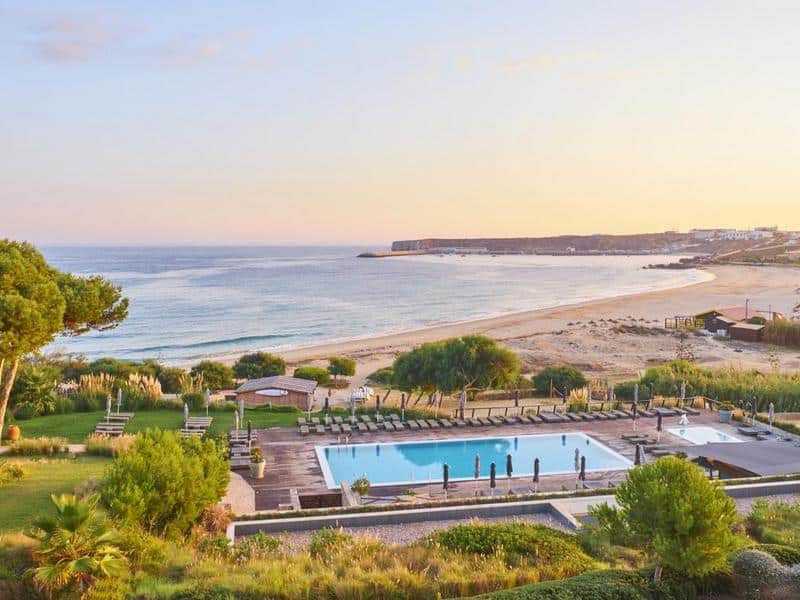
Martinhal Beach Family Resort | Sagres
A 5-star hotel designed for families offering activities for children of all ages. With five swimming pools, the central one right in front of the beach, a kids club, tennis courts, three restaurants and 4 bars
All rooms and villas have private balconies and terraces
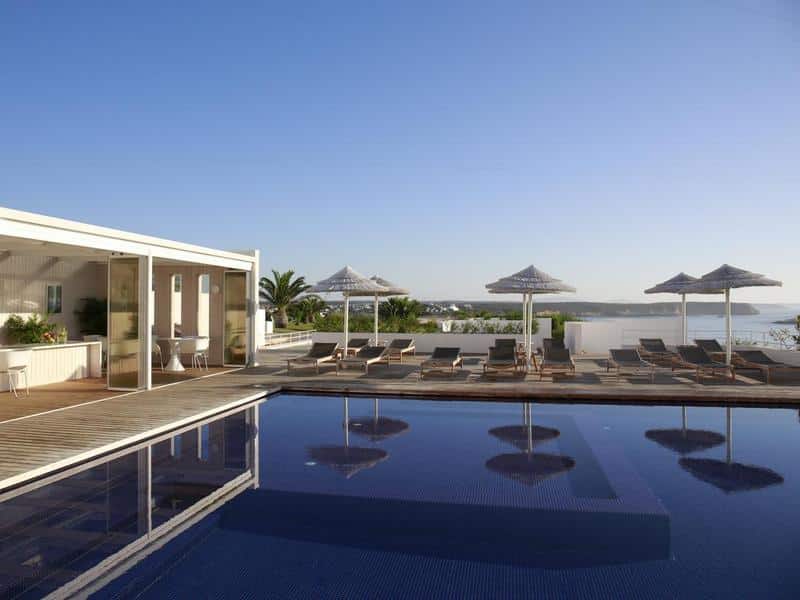
Memmo Baleeira | Sagres
A hotel directed at family, sea and well being. With 144 rooms with small terraces and decorated with simplicity, comfort, and the beauty of waking up to see the sea.
It has its surf school to start or perfect your surfing technique.
A place to drift into the intrinsic way of life of Sagres in all comfort
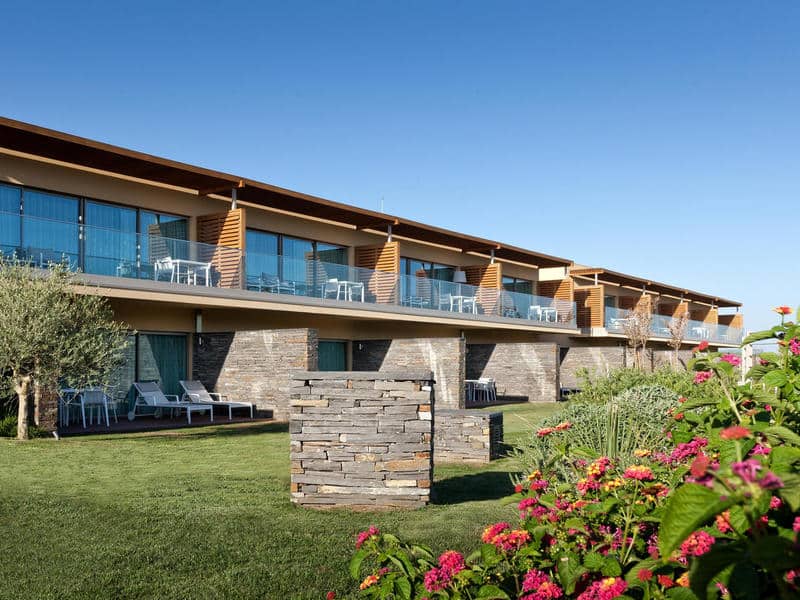
Epic Sana | Albufeira
Between Albufeira and Vilamoura this hotel has 162 rooms, 24 garden suites and 43 resort suites, all spacious and with contemporary decor.
Above the Falésia beach, the hotel has direct access to the beach via a wooden staircase
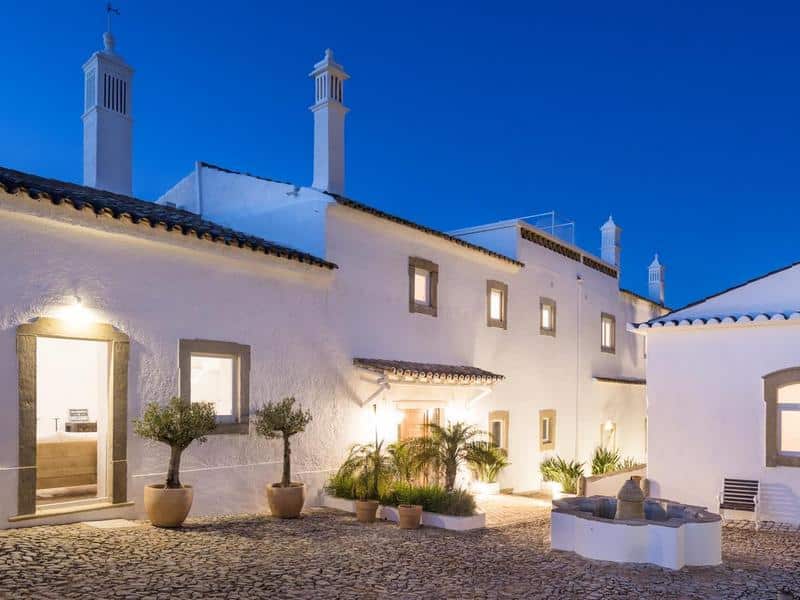
Farmhouse of the Palms | Faro
In Sº Brás de Alportel away from the crowds, the Farmhouse of the Palms provides five spacious rooms with minimalist interior decoration, a stunning outdoor pool in black mosaic and a lush garden.
All rooms have private terraces, but the nº4 room has the particularity of having an outdoor bed to sleep and admire the stars
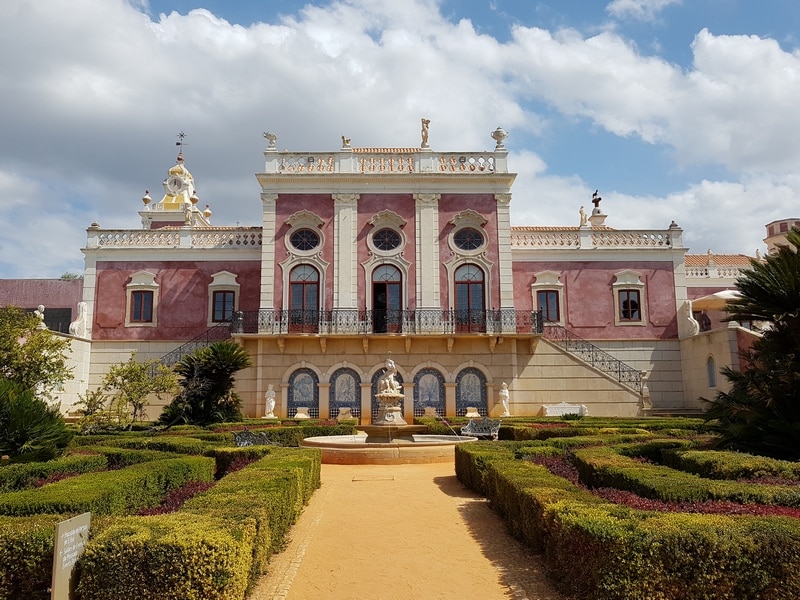
Pousada Palácio de Estoi | Faro
A restored palace that preserved much of its original elements such as the frescoes and gilded furniture in the halls. French terraced gardens invite you to stroll among statues, fountains and chapels and imagine yourself as a princess.
The modern wing houses the 60 rooms, an outdoor pool and a spa
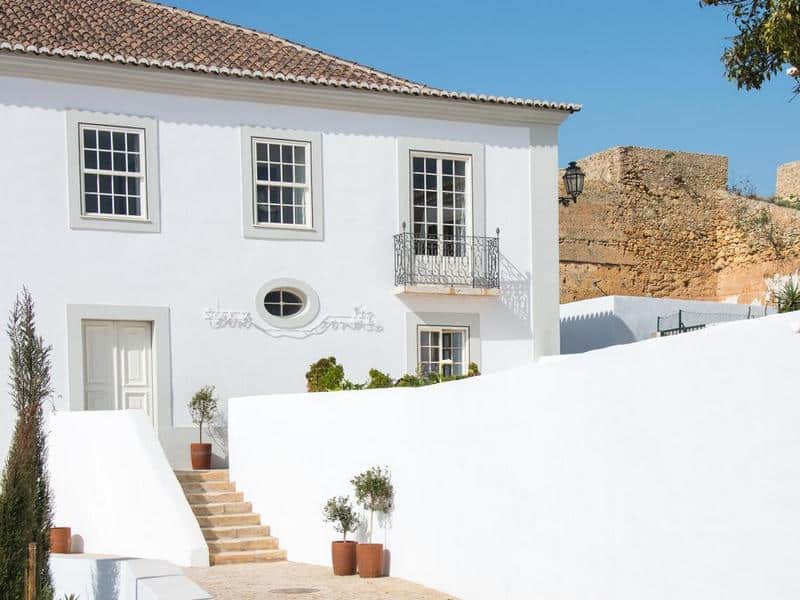
Casa Mãe | Lagos
A 5-star hotel in the heart of Lagos, where nobody would expect to find such a gem that invites absolute relaxation. It offers 22 rooms with a terrace and hammock and seven suites
It has a heated saltwater pool to be used throughout the year and a vegetable garden that supplies its restaurant

Lagos Avenida Hotel | Lagos
Located in Marina de Lagos, it has a panoramic heated pool with sea view and a bar. Sophisticated cuisine complements your stay
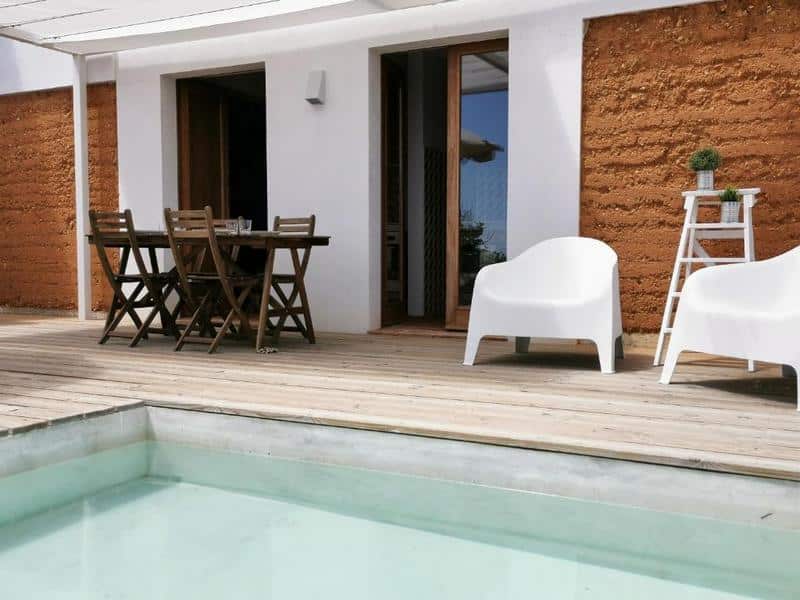
Casa de Taipa | Lagoa
The houses have been very tastefully restored offering all basic essentials as well as a fireplace for cold nights and a small pool for warm days. It is in a quiet location away from the centre but a few minutes from everything

Casa do Chico | Olhão
An apartment in Olhão, 2.8 km from Ria da Armona Beach and less than 1 km from Culatra Island. Comfortable with simple lines, featuring a bedroom and an extremely inviting terrace
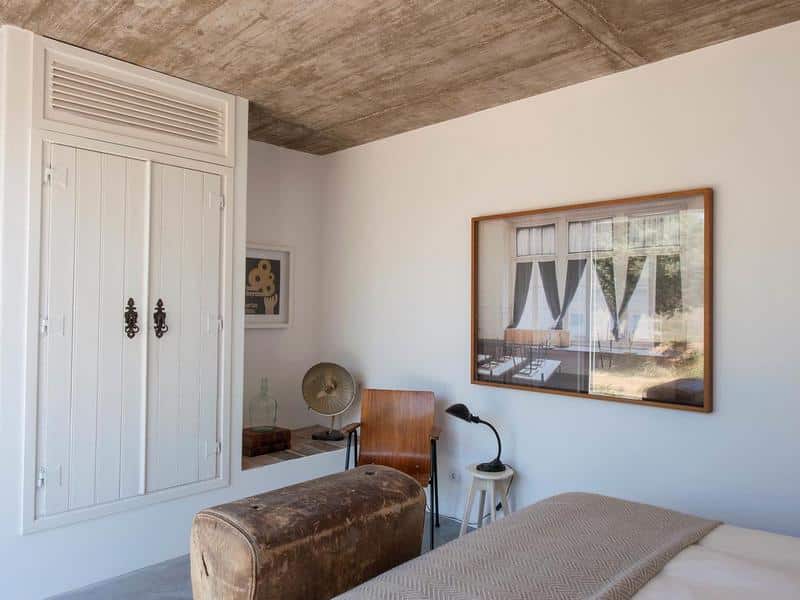
Pensão Agrícola | Tavira
A small oasis in Cabanas de Tavira.
It is surrounded by countryside and 2.5 km from the beaches. All accommodations have private bathrooms decorated with simplicity and objects of yore.
It has a restaurant, a 24-hour reception, a bar, a garden, a swimming pool and a terrace.

Quinta dos Perfumes | Tavira
A charming small hotel with ten rooms and five studios surrounded by 36 hectares. It has an outdoor pool surrounded by orange trees, day beds for a “dolce fare niente” and a vegetable garden
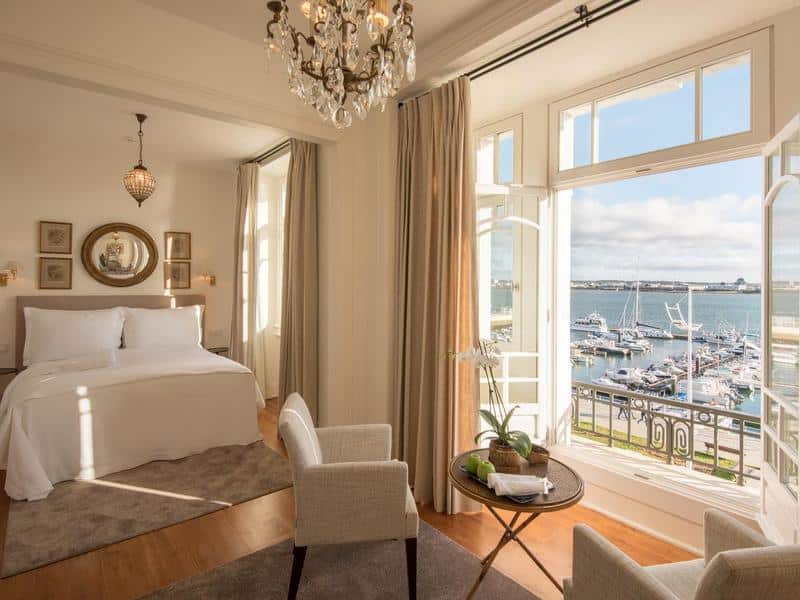
Grand House | Vila Real de Santo António
Next to Guadiana river, this hotel, after an excellent recovery, breathes glamour and good taste. One can imagine James Bond showing up here.
There is a beach bar with a swimming pool that is an extension of the hotel.
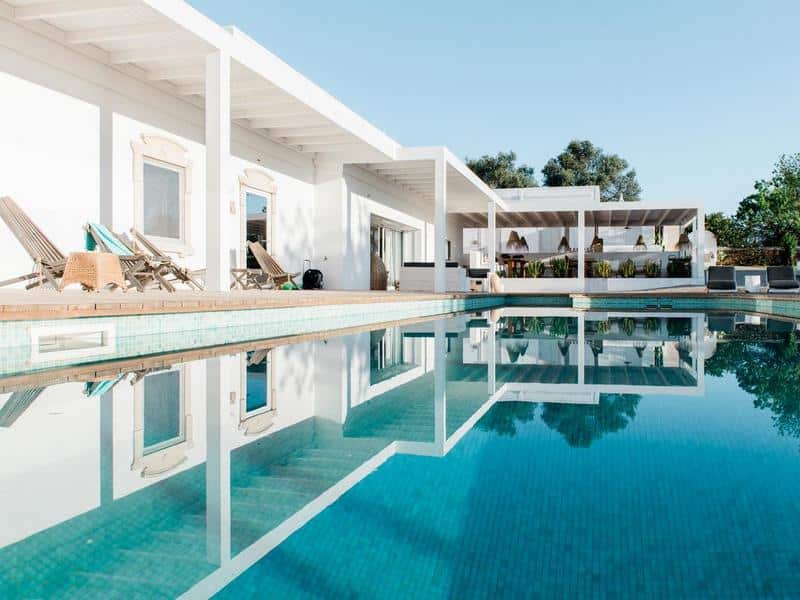
Conversas de Alpendre | Vila Nova de Sto António
In Vila Nova de Cacela this accommodation offers 9 suites, an apartment and a treehouse! Surrounding the saltwater pool is a large grove and a children’s playground
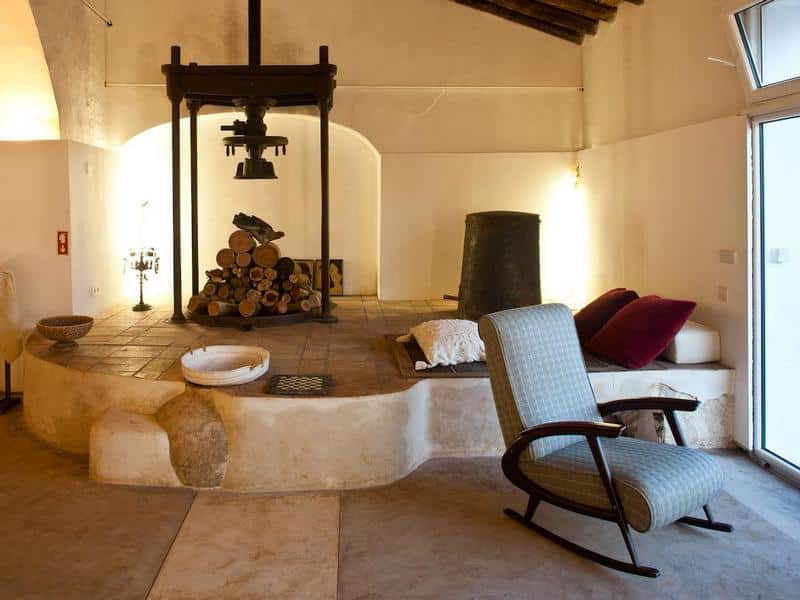
Companhia das Culturas | Castro Marim
The ideal accommodation for a retreat, a place to disconnect and do as little as possible. Wifi is only available in common areas.
All is geared towards sustainable living and absolute relaxation
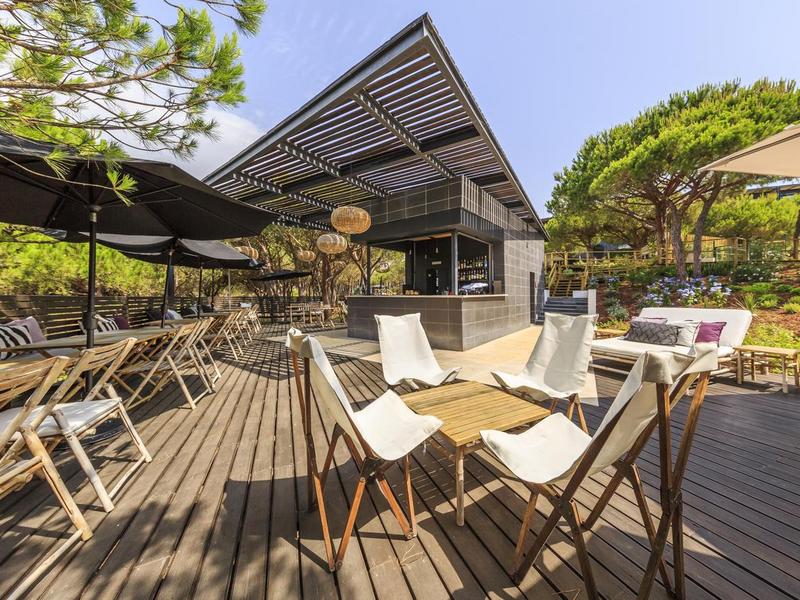
Praia Verde Boutique Hotel | Castro Marim
A 65-room boutique hotel surrounded by pine trees that provides freshness, well-being and frames charming corners such as the swimming pool and the beach path.

 English
English

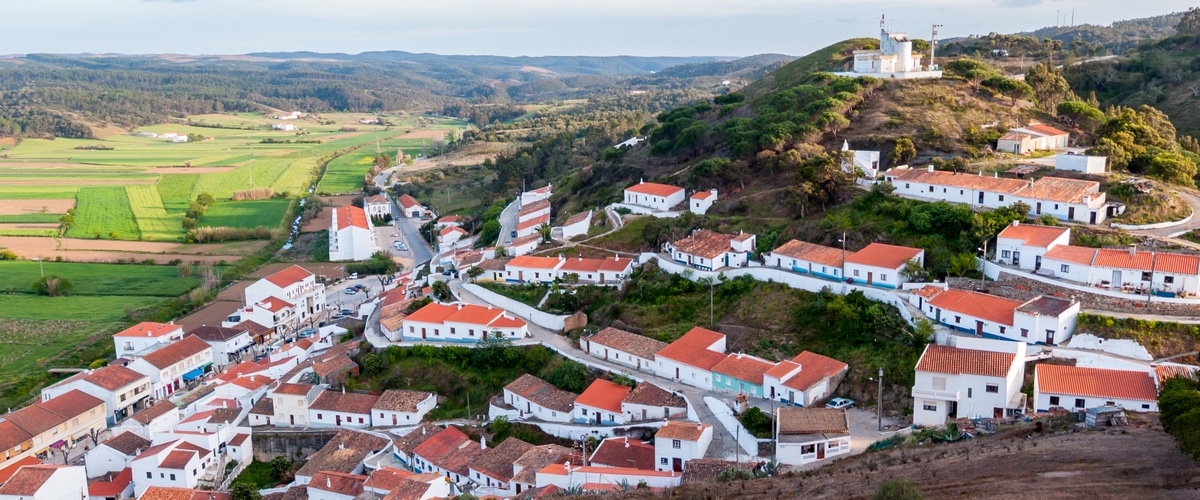
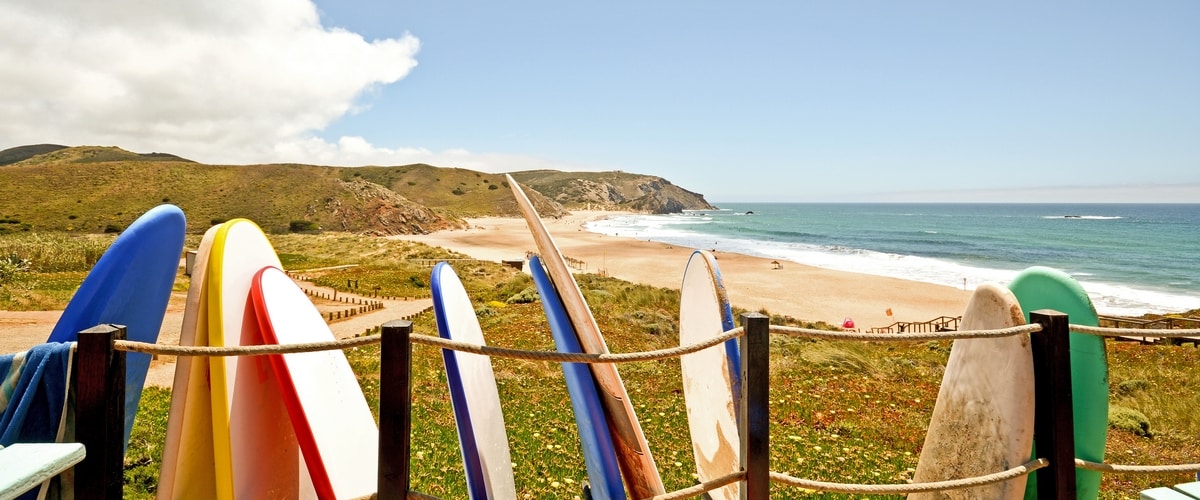
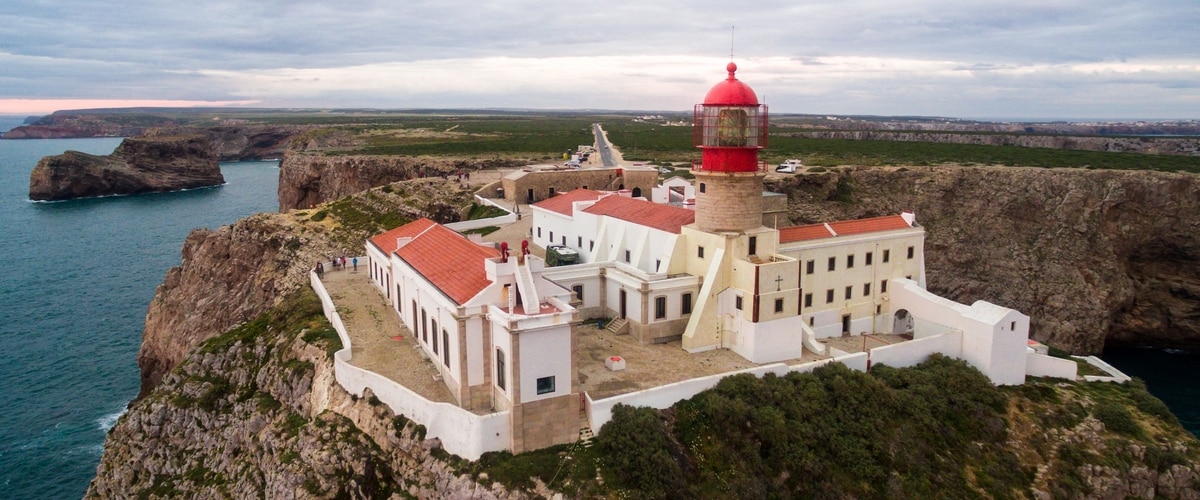
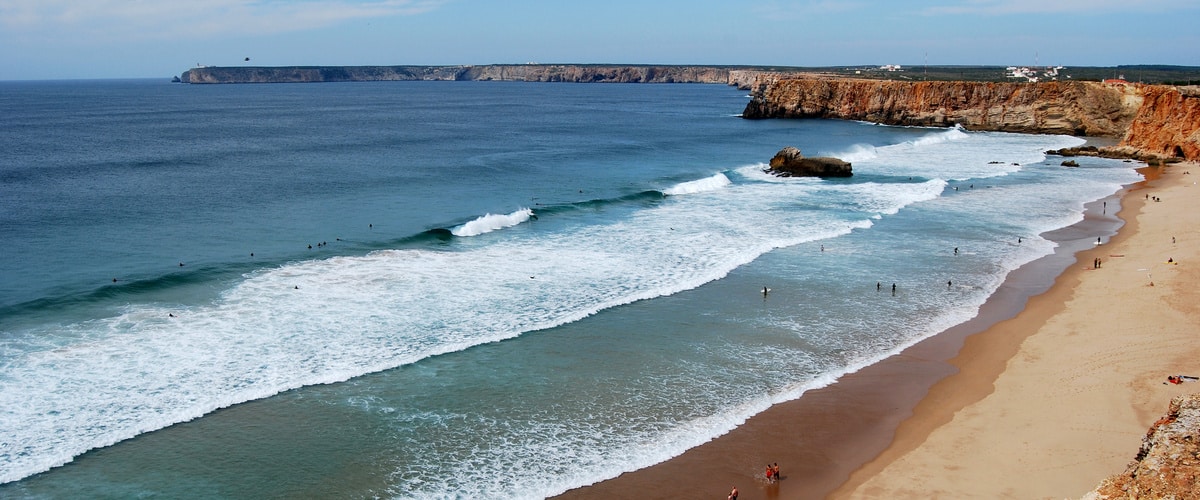
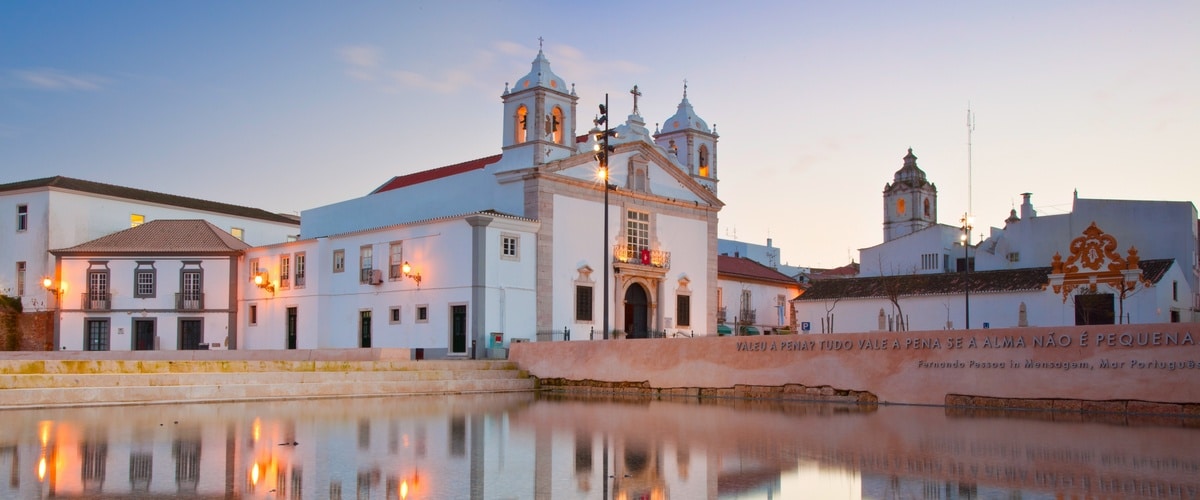
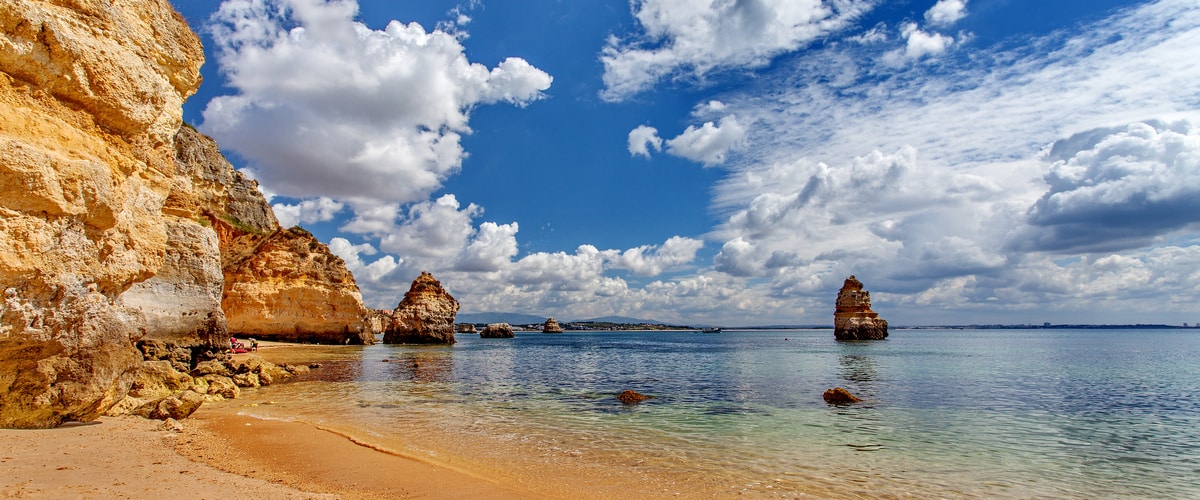
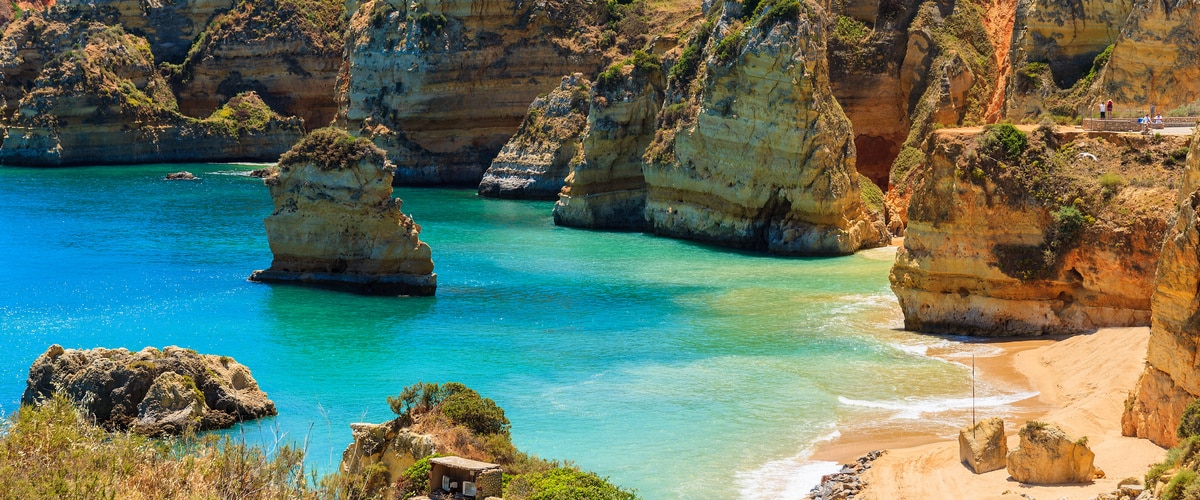
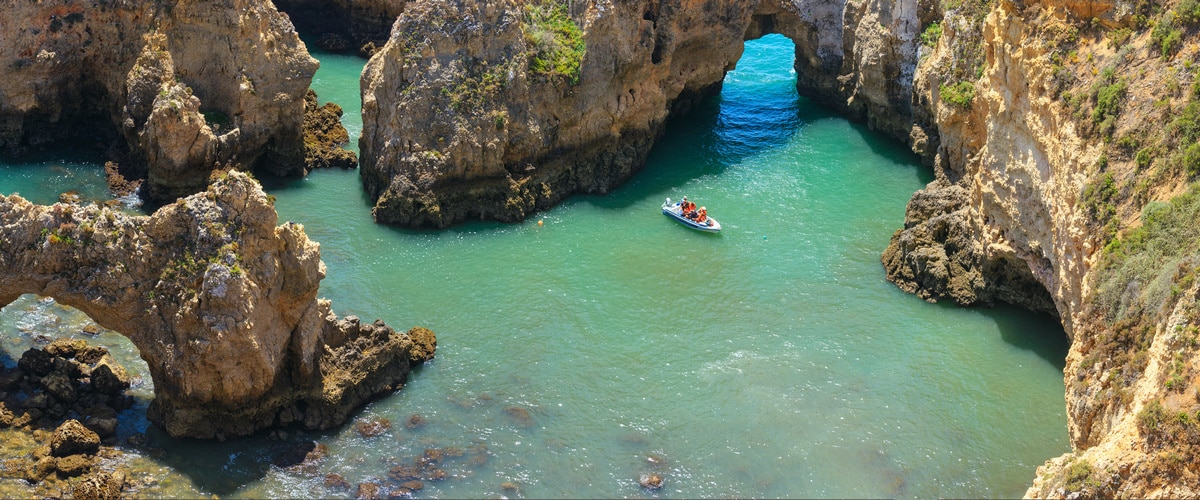
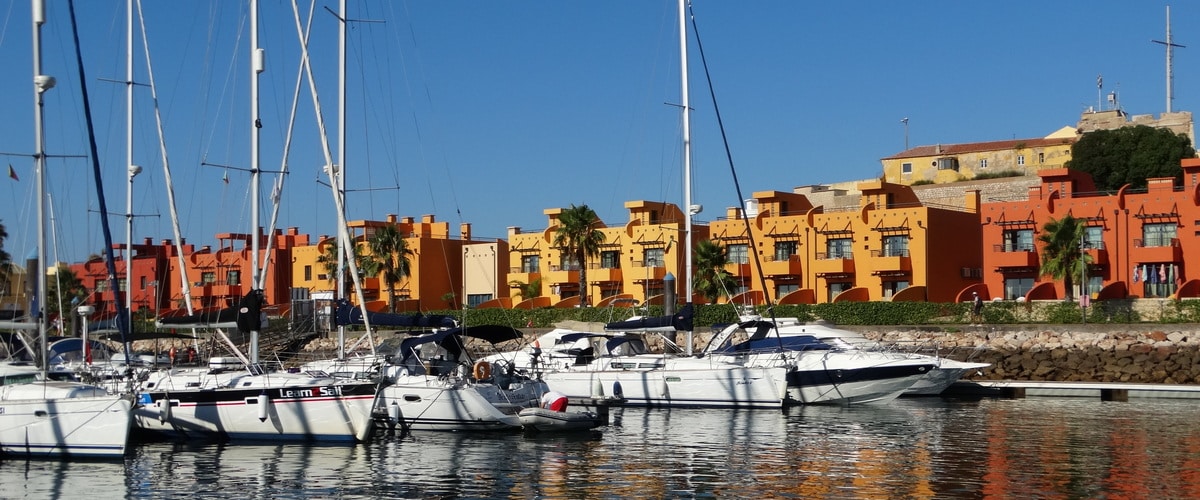

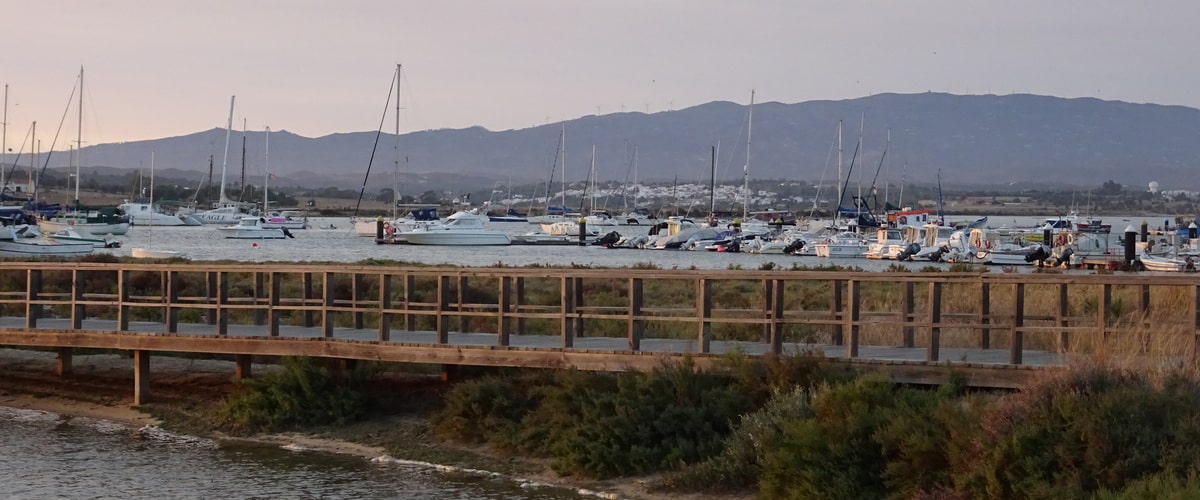
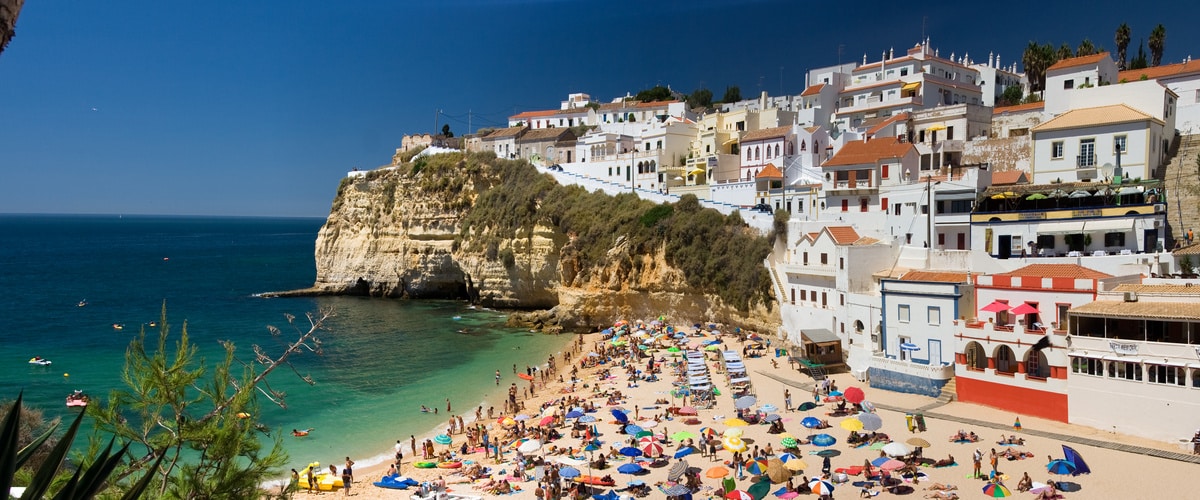


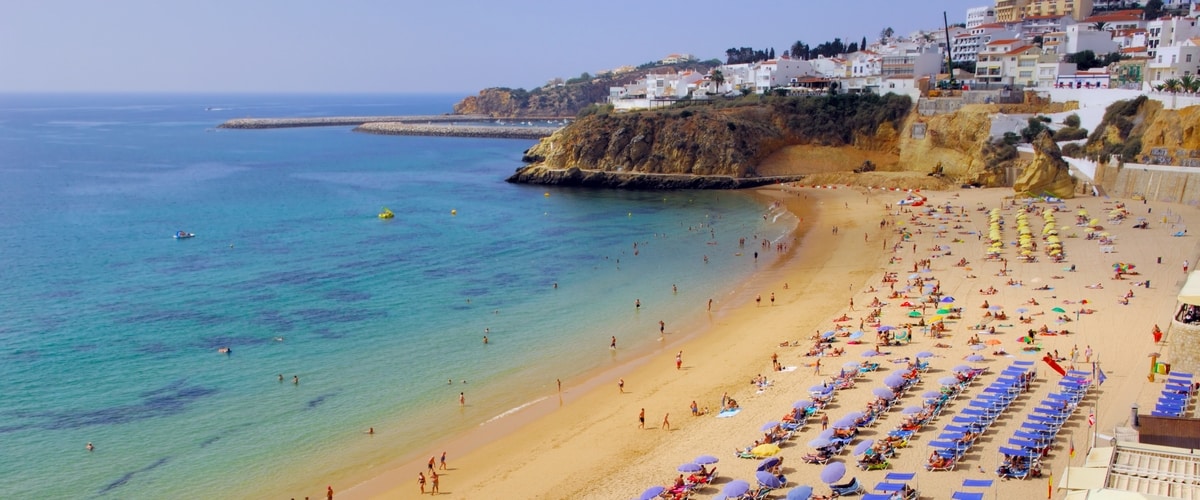

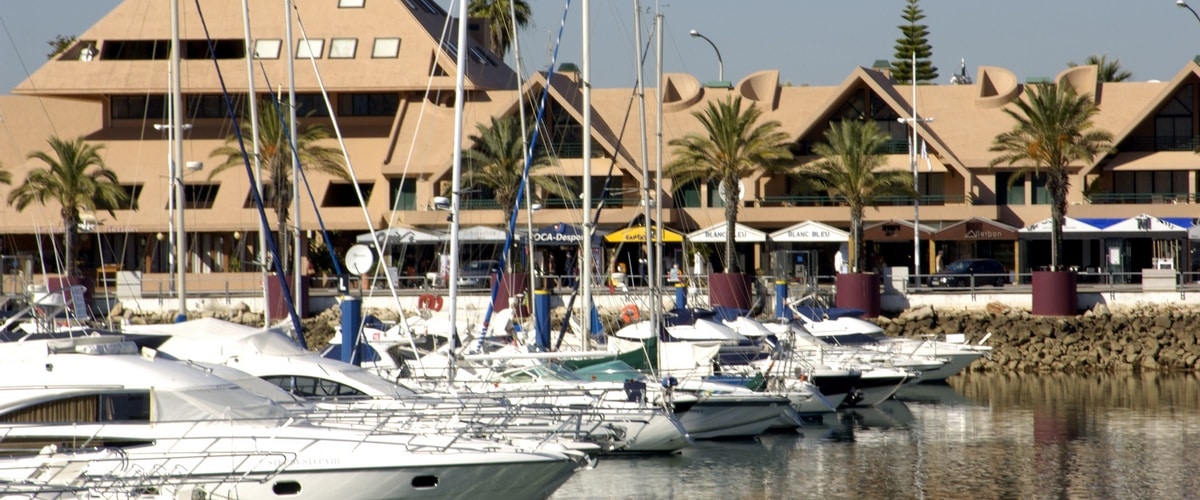

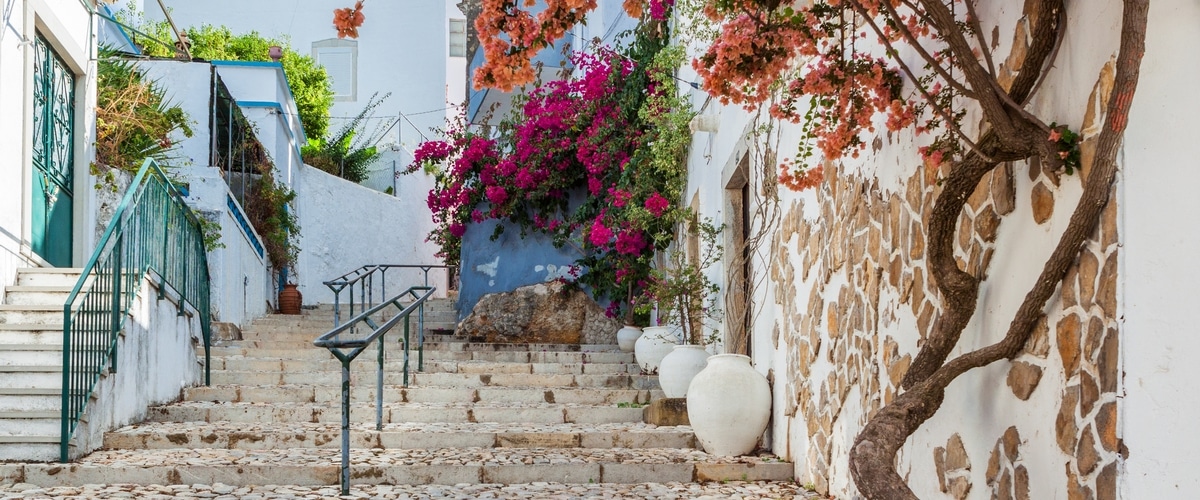

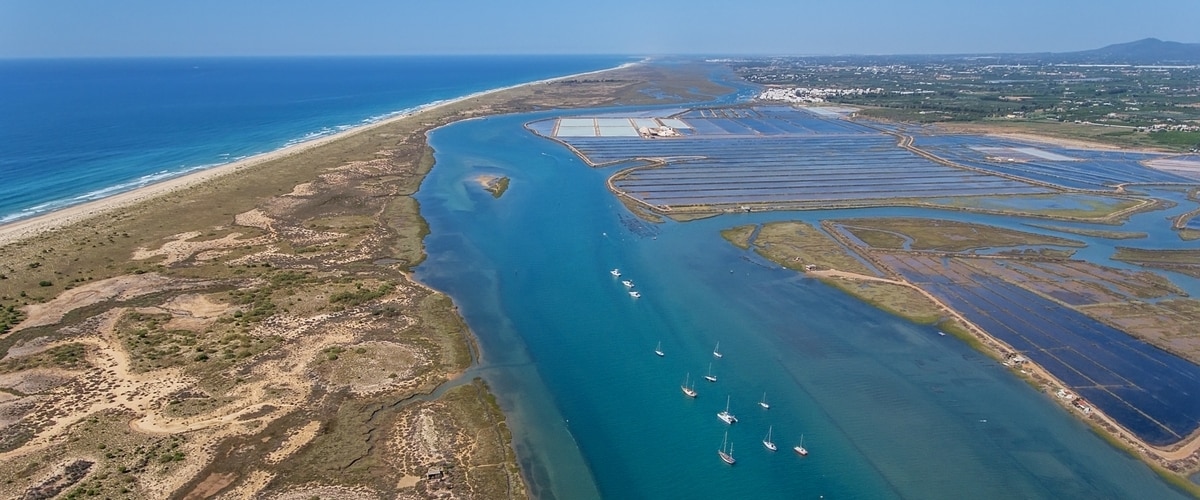
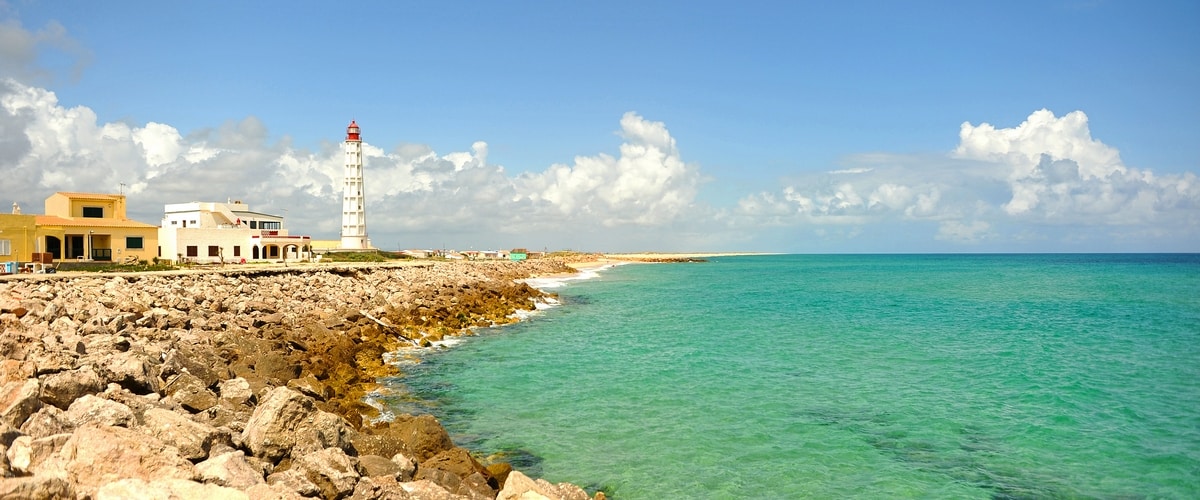
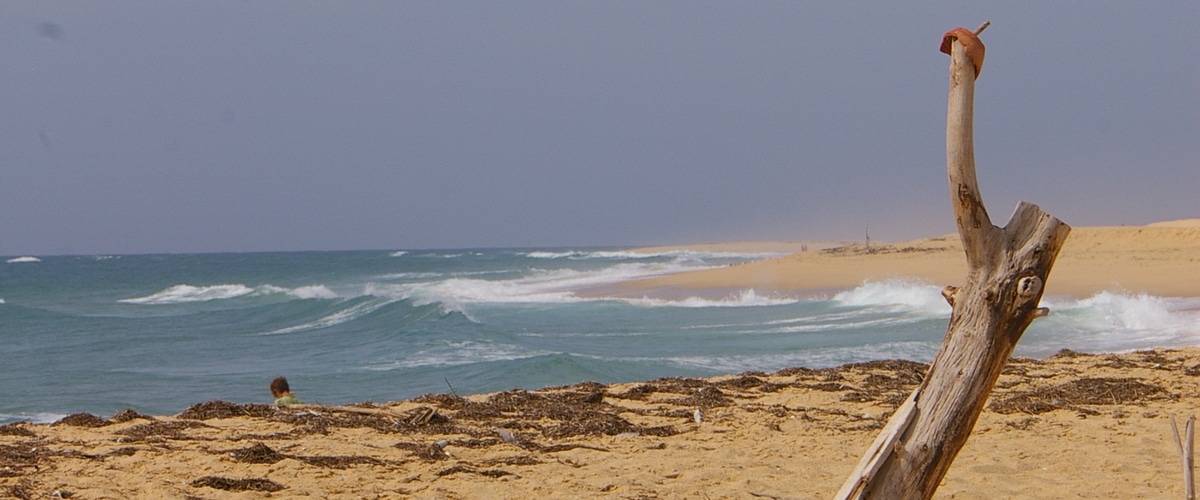
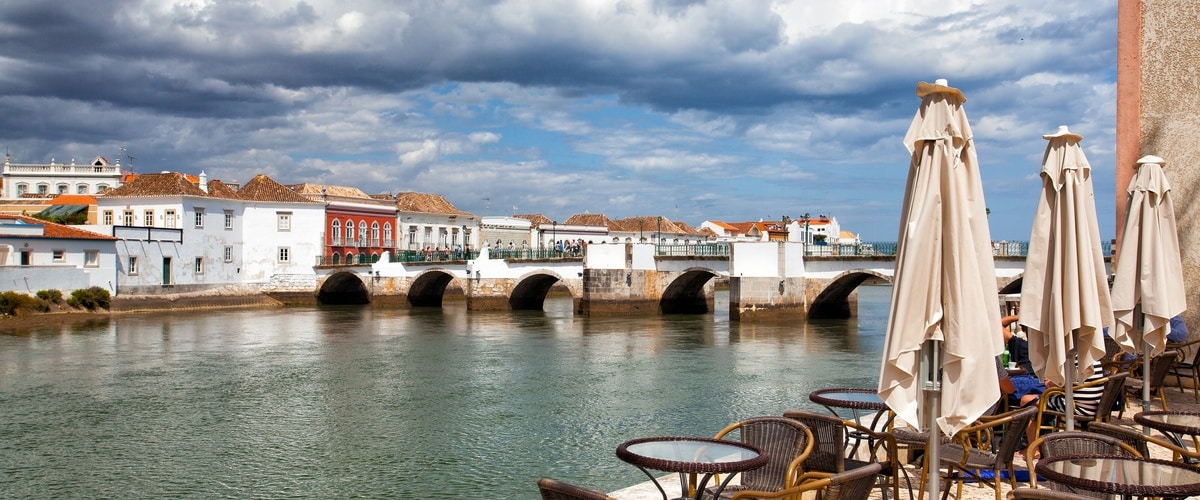
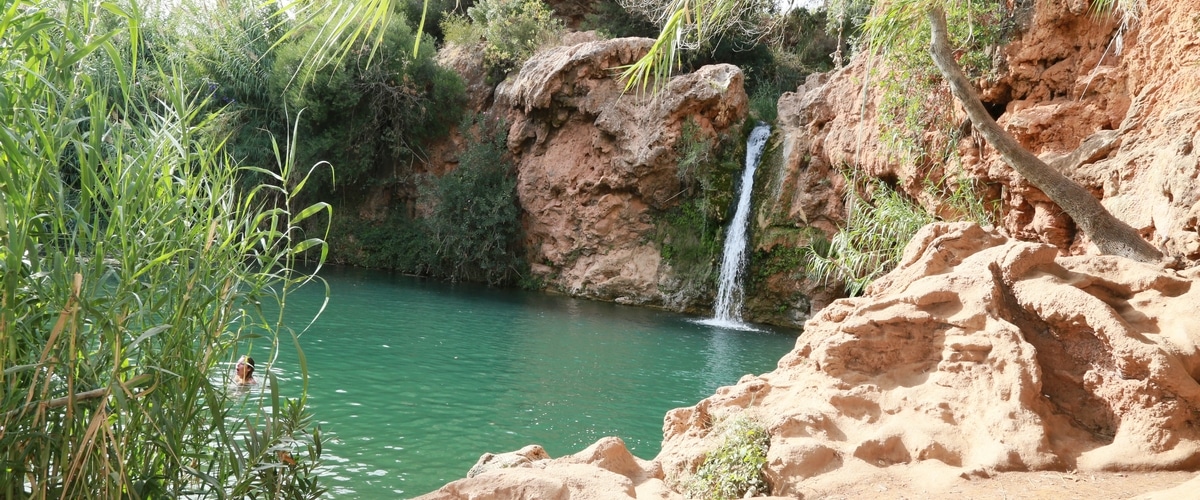



![Natural reserve of Vila Real de Sant Ant]onio](https://holiday-active.com//wp-content/uploads/2017/11/Location-algarve-Vila-Real-de-Santo-Antonio-reserva-IMGP0222.jpg)
